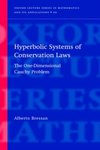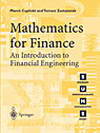
-
 Anglický jazyk
Anglický jazyk
tp1.3 A continuing inquiry into the Foundations of the Science of Physics
Autor: Joseph R Breton
This book, tp1.3, continues a dialog between the three friends, started in tp1.1 and tp1.2, on the foundations of the science of Physics. Having encountered numerous surprises in defining algebras, the friends have elected to continue on to a calculus for... Viac o knihe
Na objednávku
19.08 €
bežná cena: 21.20 €
O knihe
This book, tp1.3, continues a dialog between the three friends, started in tp1.1 and tp1.2, on the foundations of the science of Physics. Having encountered numerous surprises in defining algebras, the friends have elected to continue on to a calculus for three dimensional vectors
The friends start by considering whether the set of vectors may harbor a topology. Having found so, they next consider how limits may be defined for such a topology. They quickly arrive at many such: directional limits, omni-directional limits, limits of the first quadrant, limits in the first quadrant, limits in sections, limits along vectorial curves.
From each of these limits arises the many definitions of derivatives for the set of vectors. Derivatives may be defined with reference to the underlying field or to the set of vectors itself. Since reference to the underlying field implicates order, these derivatives are called process. Process may occur in a direction, along a curve specified by the field or along a curve defined in set of vectors itself. Derivatives may also be defined with reference to the set of vectors itself, and so relinquish order. These possibilities enable the definition of three other derivatives, namely: divergences, curls, and gradients. These many possibilities are elaborated in their respective contexts. In the context of first quadrant gradients, a definition of the gradient of a vectorial function is defined which becomes a unifying concept for non-process differentiation. Some specific first quadrant results are given.
The friends then turn to differentiation in a section. They find such differentiation occupies a central position between quadrant differentiation on the one hand and directional differentiation on the other.
Finally the friends produce a table of sums and products
The friends then turn to vectorial integration, finding they can continue on a path similar to differentiation. First, directional integrals, then process integration along curves. The integration of divergences, curls and gradients are called invergences, incurls, and ingradients respectively. The friends consider integration of functions incorporating step functions where they find interesting results.
How, the friends wonder, does one integrate over regions? The answer comes from defining vector measures in the set of vectors. Integration over measurable set then becomes possible. They also pursue results of local integration of local derivatives. And step functions? For the local context, two new step functions are defined: point, and local step functions. In each context results are obtained which are extensions of the fundamental theorem of integral calculus. With step functions, the results are extended to function with a finite number of step discontinuities.
With measurable sets comes surfaces. The friends consider derivatives and integrals over the surfaces. They find the development leads to an analysis of the Divergence Theorem.
- Vydavateľstvo: The Foundation for Theoretical Physics
- Rok vydania: 2021
- Formát: Paperback
- Rozmer: 234 x 156 mm
- Jazyk: Anglický jazyk
- ISBN: 9780984429998












